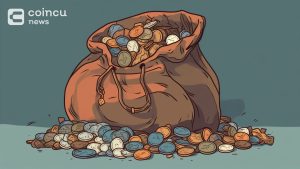Solend is facing a lot of criticism from the Defi community when it comes to proposals to hijack consumer wallets. The article provides content and analysis of the event Solend took over the management of a large wallet that is about to be liquidated.

Solend makes a series of proposals to control consumer wallets
As mentioned in an article by Coincu News, Solend faces the risk of massive liquidation when a whale wallet address that is collateralizing a large amount of SOL is about to be liquidated.

After all attempts to contact Solend still no response. Therefore, a series of proposals have been made (SLND1, SLND2, SLND3) to take over wallet management.
Lending platform on Solana’s solution was criticized by the community for “violating Defi’s ethics”.
Is Solend’s solution really reasonable?
Solend is a DeFi platform, which means that it does not interfere with users’ assets for any reason. But in the SLND1 proposal, this platform has the right to intervene in this wallet, selling off assets so that the loan position becomes safe. This goes against the decentralized philosophy.
The community has mixed opinions about this. But based on the damage mentioned above, this lending platform on Solana is facing two situations:
- Accepting the reputation of taking over the management of the wallet temporarily, but solving many consequences later.
- Leave it alone and do nothing. This creates a chain of losses, in which both the user, Solend, and the Solana network suffer.
Therefore, it is easy to understand when Solend chose to intervene in the loan position of this wallet.
In addition, action then makes sense in that it listens to the user and generates SLND2 suggestions. This proposal is not only based on public opinion, but also because the price of SOL has gradually recovered slightly, giving the project more time to find a more optimal solution.
Solend’s handling is also not too bad to be criticized because before the proposal of SLND1, Solend considered not interfering. But the aftermath doesn’t just affect each of these wallets.

The figure below shows the liquidity when selling 700,000 SOL (~21 million USD) for about 30 USD.
The price impact is about 40%. This shows that on-chain liquidity is not enough to absorb 20% of liquidated assets. So what if all assets are liquidated? This will cause mass liquidation of positions on this platform.
According to Solend, if sold via OTC, slippage is only 3%.
Next up is about the Solana network. The community is used to having the Solana network congested in 2021 and 2022. The last time was in May 2022, which happened because of a large number of transaction requests during the NFT sale, resulting in network downtime for about 8 hours.
So if a liquidation occurs, Liquidators will try to spam the network in order to win these liquidations. This can cause network congestion again. And when the network is congested, other potentially liquidated positions can’t deposit more money into the Margin account. Everything made the story even more confusing.
In addition, many people do not notice, this platform has a Treasury to settle bad debts. Treasury currently has about 20 million USD. And this event is likely to create bad debt for Solend, which the above amount is not enough to solve.
Summary
Despite its reputation for not being decentralized, Solend shows professionalism when it comes to taking the time to find ways to solve problems so as not to affect users. Still, this is a lesson for projects that don’t manage risks well enough to fall into a dilemma.
DISCLAIMER: The Information on this website is provided as general market commentary and does not constitute investment advice. We encourage you to do your own research before investing.
Join CoinCu Telegram to keep track of news: https://t.me/coincunews
Follow CoinCu Youtube Channel | Follow CoinCu Facebook page
Foxy
Coincu News



















